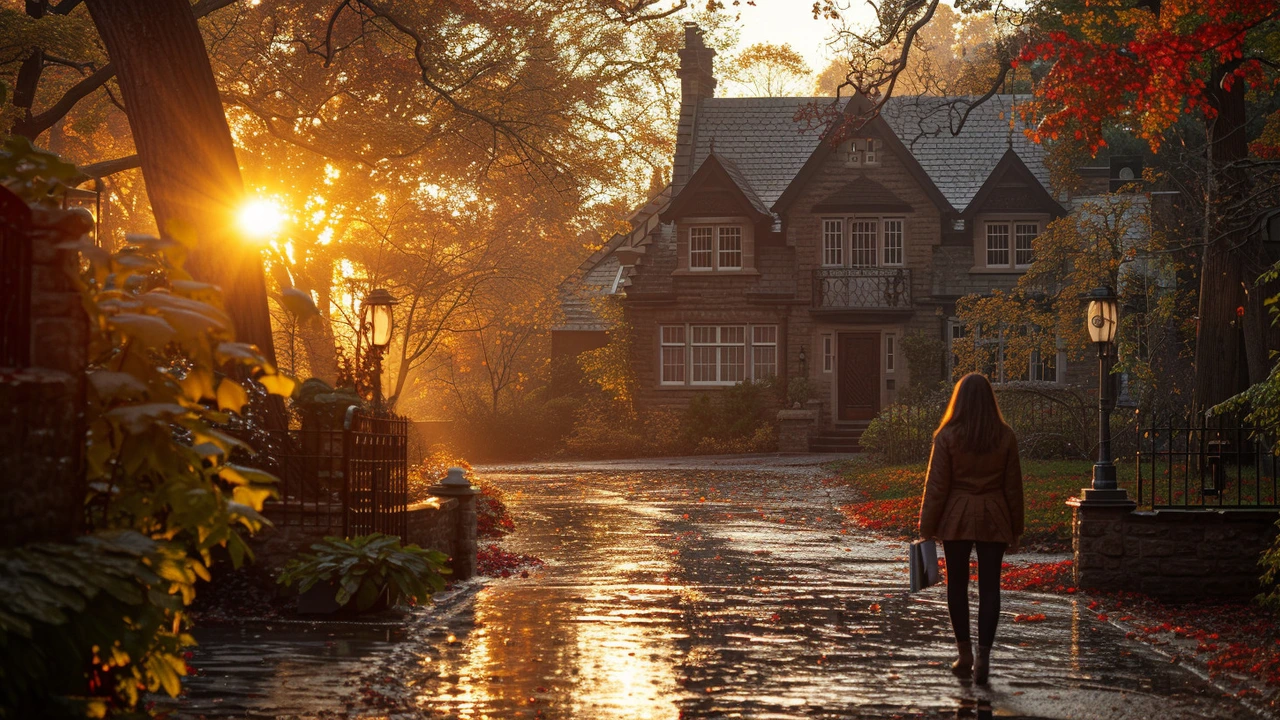Well, folks, fasten your seatbelts and prepare for a whimsical whirlwind tour through the enchanting epoch of Art Nouveau Architecture! It's like a dose of architectural magic, sprinkled with the fairy dust of yesteryears. The charm of this architectural style is like a hidden treasure, waiting to be rediscovered. With its flowing, organic lines and intricate details, it's like Mother Nature herself decided to trade in her paintbrush for a blueprint! So, grab your monocles and top hats, 'cause we're diving back into the enchanting world of the late 19th and early 20th century. It's time to rediscover the allure of Art Nouveau Architecture - a marvelous melange of aesthetics and function that continues to resonate with us even today!
Charm in Architecture: How Buildings Win Our Hearts
A building’s charm can make you slow down, take a photo, or stay a little longer. Charm is the mix of shape, material, detail, and history that feels right to people. It isn’t always grand—sometimes a tiny door, a worn step, or a clever balcony is enough to stop you in your tracks.
Different styles use charm in different ways. Colonial porches invite you in. Georgian symmetry feels orderly and calm. Beaux‑Arts uses carved stone and dramatic entrances to impress. Craftsman houses show joinery and honest materials. Even High‑Tech and Neo‑Futurist buildings can charm when they handle light, scale, and movement in a human way.
What creates charm?
Start with human scale: doors, windows, and porches should look like they belong to people, not machines. Materials add texture—real brick, wood, clay tiles, and stone read as honest and tactile. Small details finish the feeling: cornices, moldings, original hardware, a well‑proportioned window sill. Patina and wear tell a story—softened paint, a polished threshold, or a patched stone can feel alive.
Context matters. A building that fits its street, climate, and neighbors feels more charming. Think of a Mediterranean Revival with clay tiles on a sun‑baked street, or a Greek Revival house that frames a civic square. The charm comes from practical choices—rain‑friendly roofs, shaded porches, and windows that catch breezes—done with style.
How to spot charm on a walk
Look for rhythm: repeating windows and porches make a facade feel calm. Check the entry—good lighting, clear steps, and readable house numbers say someone cares. Inspect material joins where brick meets wood or stone meets metal; neat transitions show intent. Notice small things: original door knobs, sash windows, roofline silhouettes, and tile patterns. Those details often matter more than big gestures.
Adaptive reuse is a shortcut to charm. Old factories turned into lofts or banks turned into cafés layer history and new life together. Landscaping helps too—mature trees, simple hedges, and a strip of plantings make buildings feel inhabited. Don’t dismiss wear: a softened doorstep can be more inviting than a brand‑new, sterile finish.
Want to add charm to your home? Keep original doors and windows when you can. Use materials that age well rather than cheap fixes. Add a small porch or planting bed to connect to the street. Pick lighting that highlights entry details at night. When renovating, match proportions and maintain readable scale—big changes work best when they meet people up close.
Curious for more examples? Explore our tag collection to read about Colonial architecture, Beaux‑Arts landmarks, Greek Revival homes, American Craftsman details, Mediterranean Revival touches, and modern moves like Neo‑Futurism. Each article highlights practical signs of charm you can spot and adapt for your own projects.
Well, let me tell you, there's something truly spellbinding about mid-century modern kitchens! These time-traveling culinary playgrounds are all about neat lines, minimalist decor, and a playful blend of colors and materials - think fun, think quirky! It's like stepping back into the 1950s, but with a splash of 21st-century pizzazz. And, oh boy, the functionality – these kitchens are just as practical as they are stylish! It's like a tasty soup of charm, nostalgia, and modern convenience. So, if you're looking to spice up your cooking space, mid-century modern is the way to go, my friends!


